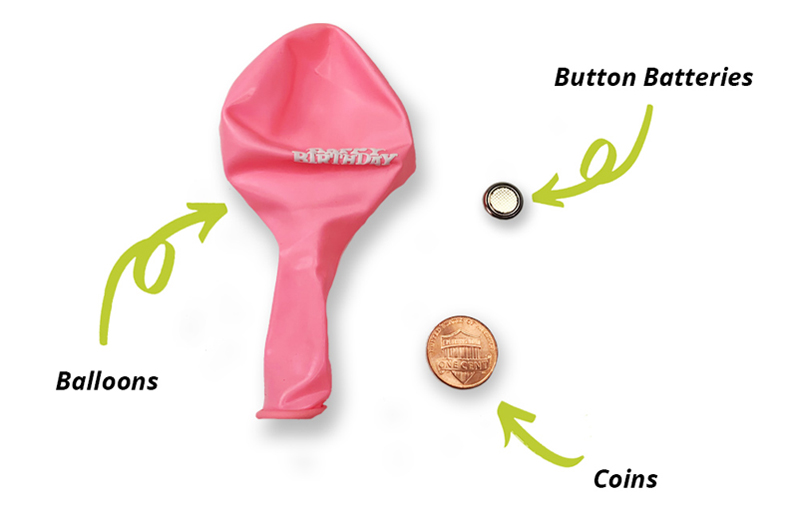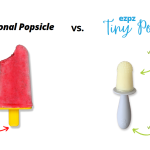Decreasing Choking Risks for Non-Food Items

When parents and professionals find out that I’m a pediatric feeding and swallowing specialist, the first question they ask me is usually about choking. This is a fearful subject, and rightly so since children under the age of 3 are most likely to experience a foreign body aspiration. In fact, choking is the leading cause of death for infants and toddlers. But infants and toddlers are not the only ages at risk. For example, choking is the fourth leading cause of death for preschool children. These statistics are scary, but fears about choking can be calmed when parents understand how to reduce the risks.
The best way to prevent choking on household items is to reduce the choking hazards in your child’s environment. Remove the following objects from your child’s reach since they are the most common items in both fatal and nonfatal choking incidents. These objects are:
- Coins
- Paper clips
- Safety pins
- Thumbtacks
- Pen caps
- Lead pencil erasers
- Buttons
- Watch batteries
- Jewelry
- Magnets
- And deflated or popped pieces of balloons
Did you know that non-food objects contribute to almost 60% of the fatal choking incidences in children under 14 years of age? There are so many non-food objects that can cause choking, but in my clinical experience, the most common ones are balloons, button batteries (small round batteries), and coins.
Balloons
Child-choking incidents involving inhaled balloons account for almost 29% of choking deaths. And although mortality rates are highest with babies, research shows that even children as old as 6 years of age (and even older) have died from choking on balloons. Yet balloons are at every child’s birthday party, sports event, or summer outing (water balloons). So with all the balloons in your child’s life, what can you do to increase safety? Be sure to:
- Examine the area your child is playing in and throw away any deflated balloons or balloon pieces you see in the area.
- Store balloons out of children’s reach.
- Keep young children from blowing up balloons.
- And keep babies away from inflatable balloons they could accidentally pop and then consume.

Button Batteries
These tiny batteries are prevalent in homes, daycare centers, and schools. They’re used in TV remote controls, fans, flameless candles, and holiday decorations. Since they are small & shiny, they naturally attract a child’s attention, so be sure to:
- Keep TV remote controls, fans, flameless candles, holiday decorations, etc., out of your child’s reach.
- Meticulously check toys and remote controls to ensure their backs are slid into place, and no batteries are exposed or popped out.
- Store extra batteries out of children’s reach.
Coins
Coins easily fall out of a jacket or pant pockets when sitting. So it’s crucial to complete a quick check for coins or other small objects in your high-traffic family areas. Be sure to:
- Look under your couch and chairs for any dropped items.
- Check in-between cushions for coins before your child sits on your couch or chair.
- Store coins and other small pocket items out of children’s reach.
Any small household object that could get caught in your child’s throat, blocking their airway, is considered a choking hazard. I hope this blog helps you understand the at-risk age groups, the common objects to remove from your child’s environment, and practical ways to minimize choking risk in your home.
P.S If your fear of choking is making you anxious or holding you back from starting solids with your baby, check out my Choking Prevention and Response Course. I teach four lessons about safe swallowing development and choking prevention for babies, toddlers, and school-age children in the course. My colleague Katie Ferraro, MPH, RD, CDE, also teaches two lessons in choking prevention, while Brandon Doerksen teaches the intervention portion of the course. This is the first course of its kind with trained medical professionals teaching you all about decreasing choking and how to intervene if necessary.
P.P.S. And if you want a choking rescue device that you can keep in your home or car, check out my Amazon Store for devices for all age groups.
What is your favorite tip for avoiding choking on non-food items? What are some of your go-to products to help increase safety in your home? #MsDawnSLP





